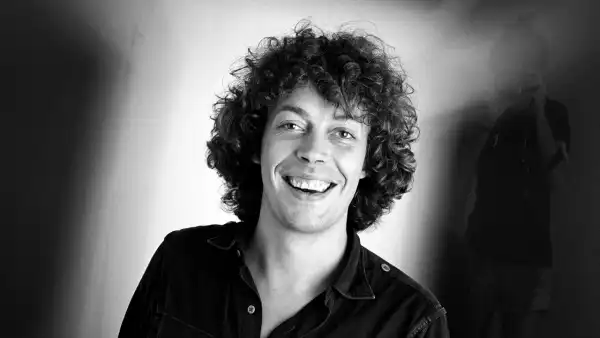
Save this storySave this storySave this storySave this story
As an obsessed amateur photographer, I spend too much time reading photography forums on the Internet. Not long ago, I came across a particularly plaintive discussion. “Let’s say, hypothetically, I’d like my future great, great grandchildren (and their offspring) to see some of my photos,” someone wrote. “Not necessarily hundreds or thousands of my photos. Maybe just a few.” What would it take to make this possible? The responses piled up, full of cautionary notes. Pictures could be stored digitally, but there was a good chance that today’s files wouldn’t work on tomorrow’s computers. They could be stored physically (on archival paper, in archival boxes), but could still suffer from leaky basements or moving-day chaos. Ultimately, the biggest obstacle was attention, or the lack of it. Why would your descendants care about your pictures? Lots of people have old photos showing long-dead relatives they can’t identify. The bottom line seemed to be that, if you weren’t a great artist, or didn’t photograph moments of historical importance, then your photos would die with you.
After reading, I scrolled through my own collection of photographs. I have roughly ten thousand stored in Adobe Lightroom (the program I use to edit my photos), and thousands more squirrelled away on various hard drives and cloud services. I also have boxes of prints and binders of film negatives here and there. Although I’ve been photographing seriously since my twenties, the pace of my production has increased markedly since I’ve had kids; I’m now adding a little more than two thousand pictures a year to my archive. This suggests that, by the time I’m eighty, I’ll have about a hundred thousand photos in my hoard—three times as many as are held by the Museum of Modern Art.
Perusing my photo library, I sensed in its scale an element of the absurd—a quality that the philosopher Thomas Nagel associates with “a conspicuous discrepancy between pretension or aspiration and reality.” It’s absurd when “someone gives a complicated speech in support of a motion that has already been passed,” he writes, or when, “as you are being knighted, your pants fall down.” I’m no Sally Mann or Steve McCurry, and yet I’m amassing an expansive visual account of my life. My pictures are well considered, and made with fancy equipment, and even with some imaginative and physical effort—it’s not so easy to photograph a water-gun fight in the pool!—but they are fundamentally ordinary. Photographs don’t have to be art: in a recent book, the critic Nathan Jurgenson explored the rise of “social photos”—the immediately sharable dressing-room selfies, appetizer snapshots, and view-from-the-hotel-balcony landscapes that aren’t meant to be art works but are, instead, “about developing and conveying your view, your experience, your imagination in the now.” But, even though I share some of my photos with family and friends, they aren’t social. They’re made for broadly artistic reasons, even though they’re just everyday photographs.
Actually, there is one sense in which the photos are meant to be useful in “the now.” I’m legally blind; my vision is good enough for many things, but bad enough that I can’t drive. Even with glasses, I live in a bit of a blur. I’ve travelled to many places without quite seeing them, and known many people without quite knowing their faces. So, by taking photographs, I’ve found out what the world looks like. I imagine that even people with keen eyesight might experience something similar. Photographs, even mundane ones, pause and magnify. They let us look, and look, and look at what our roving eyes pass over. And we often pass over everyday things—which is why it can be fascinating to find out what your coffee mug, or your cat, or your own face looks like at just the right time of day.
My pictures show mainly people (my wife pushing our daughter on a swing), places (the dining room of our old apartment), and light (the main intersection in our town, strongly lit at sunset). Although I have thousands and thousands of photos, my life doesn’t encompass thousands and thousands of people and places. The result is that I’ve photographed the same people, places, and kinds of light repeatedly, for many years.
Taking pictures of the same things over and over can emphasize the rhythms of existence. Every evening, on the way home from work, I pass the same red-and-white fire hydrant, which is set into some reedy bushes on a little promontory overlooking a harbor. I often stop to take a picture of it: its red registers as warmer in summer and cooler in winter, and its white adopts the yellow of scorched grass in late summer and fall. People’s faces also change with the seasons: photographing my family on the lawn can be difficult in summertime, because the strong light reflecting off the grass can give their complexions a greenish cast, lessened only at what photographers call “golden hour”—that time in the late afternoon when the sun casts an amber glow. Warm or cold, green or yellow, and bluish-white in winter: these sorts of ambient colors change cyclically, through all four seasons.
Repetition is constant on a smaller scale, too. Last month, I noticed my kids smiling at each other through a window; my son was outside, my daughter was inside, and the early evening light illuminated them both without creating troublesome reflections on the glass. I didn’t have my camera within reach, but I took the picture in my head, and I was able to get it for real a couple of days later, when the same scenario unfolded at the same time of day. Once people do things, they often keep doing them—all you have to do is wait. This is both photographically and existentially reassuring. Parents love pictures of kids blowing out birthday candles, but such brief moments are hard to capture; luckily, if you miss it this year, you can get it next year. I think with some regularity of a remark made by the British-Irish comedian Jimmy Carr, who once told an interviewer that the meaning of life was “enjoying the passage of time.” Everyday photography, with its implicit emphasis on what recurs, makes enjoying the passage of time a little easier.
Mundane pictures can even capture continuities that reach far into the future—maybe not all the way to our great-grandchildren, but at least to our future selves. Shortly after my son was born, I hired a photographer whose work I admired to review some of my pictures. He approved of a portrait of my father-in-law, sitting with my toddler son on his lap in a chair on the porch. Still, he said, it might have been better if I’d stepped back a little, so that more of the chair and the porch were visible; in a few decades’ time, I might be as moved by the chair as by the subjects, because it would remind me of how the house used to be. Around then, I happened to be exchanging e-mails with Daniel Dennett, the eminent philosopher of mind, whom I’d profiled for this magazine, and he struck a similar note. “When you take pictures, make sure you get pictures of all the time-sensitive things in your house,” he told me; that way, your future self could say, “THIS was our car, this was our television set, this funny thing is called a dishwasher.” When he looked at photos from his youth, he wrote, it was “often the startled recognition of a long-discarded plate or chair or vacuum cleaner” that fascinated him—not “the pictures of little me.”
Just this morning, I took a picture of my kids in the back of the car as my wife drove them to school. In all likelihood, it will be lost in the torrent of other photos—but there’s a chance that, decades from now, one of us will enjoy recalling the exact appearance of the crumb-strewn interior of a Subaru Crosstrek in the year 2024. I feel connected to that future person; I’m idly curious about what they’ll find startling.
Photos of everyday life tend to involve mess, or worse. The lawn is muddy and littered with plastic toys. People have wrinkles and blemishes and shirts with stains. One overarching question is whether one’s everyday photos should veer toward an unflinching aesthetic. I have a photograph of my mother’s abandoned vegetable garden, run to riot after she fell ill; it’s probably the saddest in my archive. But I don’t have pictures of my elderly grandparents close to death, or of my kids nursing cuts or bruises. My own preferences tend toward idealization.
One risk of photographing your life is that you’ll create an illusory version of it, a selective visual record that reflects your wishes rather than reality. But realism is also an aesthetic, with its own temptations. I have a shelf full of photography books centered on everyday family life. The titles are suggestive: “Juggling Is Easy,” by Peggy Nolan; “Permissions,” by Emma Hardy; “Days & Years,” by Ashly Stohl; “Son,” by Christopher Anderson; “Immediate Family,” by Sally Mann; “Family Car Trouble,” by Gus Powell; “Theatre of Manners,” by Tina Barney. The books work in different modes, ranging from documentation to artifice, from toughness to gentleness. Some are full of visionary photographs, others of snapshots elevated by sequence, candor, or intent.
It’s possible for a photograph, like a movie, to look real while being completely unreal. Still, photography, as it’s generally practiced, is tied to reality more than many other art forms. A photographer must start with whatever is actually in front of the lens; for this reason, “the first look at a hastily taken picture is an act of discovery,” Robin Kelsey, a professor at Harvard, writes in his book “Photography and the Art of Chance.” “In this one, an expression is exuberant or a gesture is winning; in that one, a mouth is agape or a hand blocks a face.” He notes that, “for amateur and professional alike, the successful picture can be an uneasy source of pride. Pressing the button fosters a sense of having produced the picture, but how far does that responsibility extend?” Kelsey contends that, for some photographers, the “radical indifference” of the camera to its subjects has evoked “the withdrawal of God and the advent of a disinterested cosmos in which the place of humanity is random and unprivileged.” For others, by contrast, photography’s ability to pull beauty from chance has been redemptive, as though “the mechanical ways of photography could reveal, address, or momentarily overcome the mechanical ways of the world.” For my part, I find that I love photography partly for the way it combines these two contrary intuitions. My pictures are so often random, ugly, disorderly, pointless, until, miraculously, they aren’t.
In “To Photograph Is to Learn How to Die,” the photographer and essayist Tim Carpenter describes the viewfinder of a camera as a place where “decreation” happens—as a venue in which the goals, preconceptions, and preferences of a photographer are necessarily thwarted by whatever happens to be unfolding inside the frame. Decreation can be frustrating, and yet, in his view, without it there can be no art—only fantasy, or the rote performance of taste. A camera, Carpenter writes, forces on a photographer “a hard-earned love for the recalcitrant real.” It’s this love for the real, he thinks, that teaches us how to die; we prepare ourselves for mortality by “laying claim to the powers of the self to create meaning where none otherwise exists, and understanding that, counterintuitively, these powers are even more astonishing when harnessed to and constrained by the actual.”
It’s a little absurd, maybe, to think thoughts like these in relation to photographs of soccer games, dance lessons, parking lots, and play dates. On the other hand, in Thomas Nagel’s view, there’s nothing truly wrong with a sense of life’s absurdity. Animals, he speculates, are unlikely to see their own lives as absurd—and this is a weakness on their part. The feeling of the absurd is simply “a way of perceiving our true situation,” Nagel writes; it flows from our “capacity to transcend ourselves in thought” and imagine ourselves objectively. He concludes his essay “The Absurd” by arguing “that absurdity is one of the most human things about us: a manifestation of our most advanced and interesting characteristics.”
All of which is to say that, no, your great-great-grandchildren won’t care about your photographs (or much else that you do); no, it isn’t entirely sensible to take thousands of pictures of your life (or to undertake many of the projects that captivate us); and, no, you’re not likely to wring transcendence out of the mundane on a regular basis. You can, however, learn something about yourself and your world by doing or attempting to do these things. Even amateur hour becomes golden hour, sometimes. ♦
Sourse: newyorker.com






